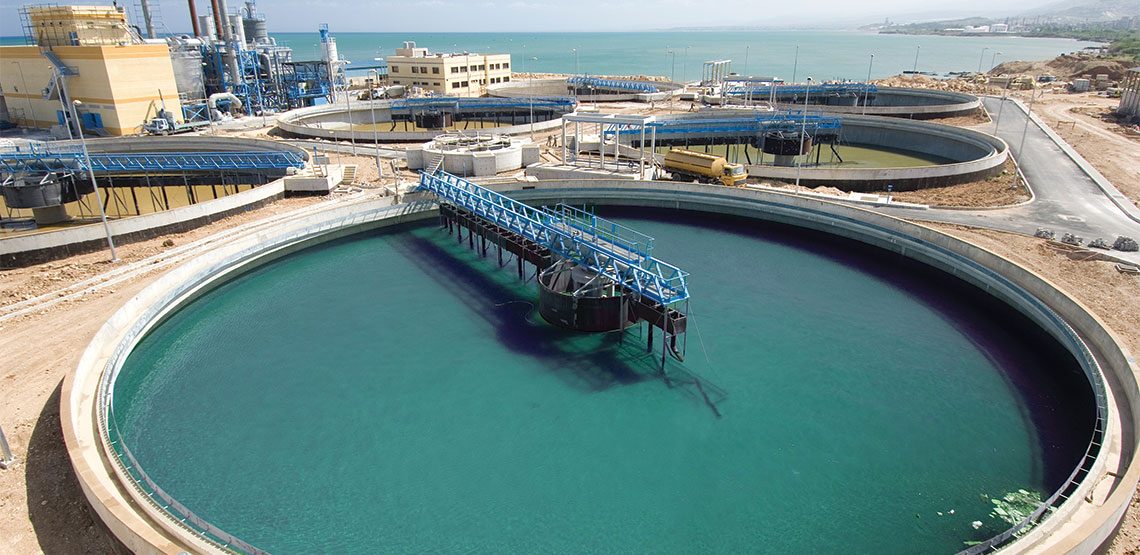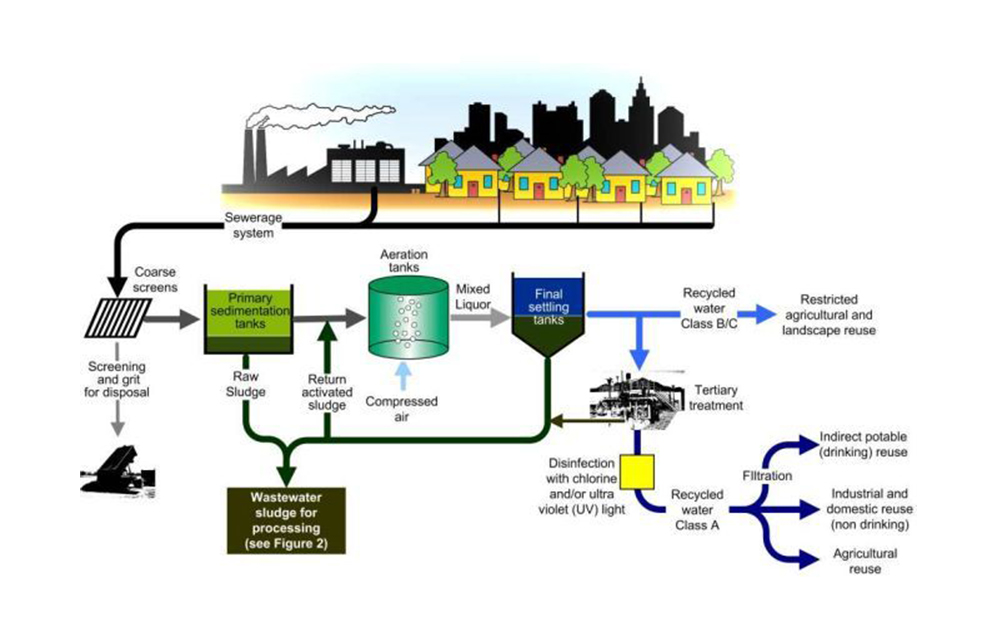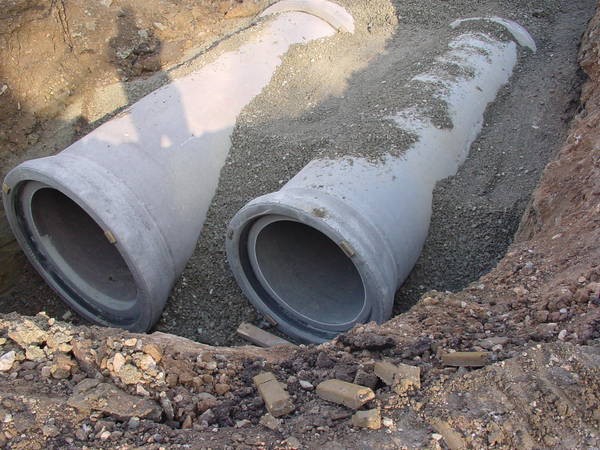What are the processes involved in the waste water treatment plant?

For the water getting into the waste water treatment plant to be safe for consumption by the time it leaves there, there are four major steps that it has to go through. The four steps include the preliminary stage, primary stage, and secondary stage and sludge treatment stage.
In institutions such as schools, homes, industries among others, there are sewers that connect them to the water treatment plants where they can deliver their waste water. The water then goes through the four stages above and is then ready for reuse.

1. The preliminary stage
The preliminary stage is also known as the pretreatment stage in the wastewater treatment process. This is the stage during which the easy pickings in the waste water are removed.
The easy pickings that are removed during this stage include substances such as plastics, leaves, cans, rags, among others. During this stage, the rate of water inflow is regulated to help maximize the waste items that are collected in this stage.
Additionally, grease and fat are removed during this preliminary stage. However, this may vary among various wastewater treatment plants where in others the removal of grease is done in the preliminary stage.
There are also basins that hold the water until it is ready for treatment as well as avoid overflow during the heavy rains. By the time the wastewater leaves this stage, all the small particles have been gotten rid of.
2. The primary treatment stage
After the waste water which is now free from particles leaves the pretreatment stage, it gets into primary clarifies, which is the stage that is also known as the pre-settling basins stage. These are large sedimentation tanks where the water collects and is stored after leaving the first stage.
In case there was no removal of oil and grease during the pretreatment, it happens in this stage using the surface skimmers. This stage also takes advantage of gravity that allows any particles that could be remaining to settle.
In case the waste water treatment plant is using mechanical driven scrappers, they collect the solid materials and direct them to the hoppers which are connected to the sludge treatment plant. There are other treatment plants that use some special equipment to saponify the collected fats and mix them with lyre.
Water is also driven towards the hopper which is found at the base of the tank. The hopper arm moves around the edge of the tank containing the water at a speed of 4 cm every second.
This speed helps ensure that all the particles and substances that need to remove at this point are trapped. After this, the treated water heads towards the edges and of the tank where there is a higher velocity settle at the bottom of the tank since most of the materials have been absorbed.
The level of waste in the water that is to be treated drops to 60% when in this stage. It is also in this stage where there is the production of soap and glycerol.
3. Secondary treatment stage
This is the third stage that the waste water gets into while in the sewage water treatment plant. In this stage, there is use of secondary basins where by the plant aerates and agitates the waste water that is collected.
Additionally, in this stage, there are several alternative methods that are applied to help break down the sludge. For instances, plants can culture several microbes and later pass the waste materials over the biofilm.
In other cases, there is the reuse of the waste material that can be recycled for reuse. Later the biological flock that results removes nitrogen and carbon from the organic wastes.
There are also chances of oxidation occurring in this stage whereby the it occurs in filter beds that contain limestone or coked coal. Other waste water treatment plant facilities have reed beds and waste plants which help in the decomposition of the present organic material.
Other steps and technologies that are used in the secondary treatment stage are such as biological aerated filters and membrane bioreactors filters. The waste in this step is then stored and collected in the waste water clarifier tank.
4. Sludge treatment stage
This is the final stage that the waste water goes through while in the wastewater treatment plant. In this stage, the activities are mainly here to help in the treatment of sludge and biosolids.
The stage also takes advantage of gravity to help in the separation of organic waste from heavier graft. The graft is later disposed into a landfill.
The primary sludge that remains is passed through a thickener. It is in this step whereby it is centrifuged and later poured into digesting tanks which will be containing aerobic bacteria.
The tanks where the sludge is poured mainly contain methane, which is used to power the plant. The solid product that will be obtained through this is then deodorized and can then be used to as a soil fertilizer.
The remaining waste water is then taken through another treatment process whereby different nutrients such as nitrogen and phosphorus are removed. Ultraviolet light, ozone and chlorine are used in the treatment of the water during this stage.
At this stage, the water is now safe for reuse and ready to be taken back to the environment among other institutions that may need solid water. However, all the equipment used in the wastewater treatment plant and the discharges must meet the Environmental protection safety standards.
This helps ensure that the water that has gone through the sewage treatment plant is not likely to cause any health havocs.
After the water leaves the final stage, it is inspected to analyze the contamination level as well as confirm whether it has reached the highest standards that it is supposed to meet. It is also at this point that the water is determined whether it should be used for domestic or industrial purposes.
What should you look for when looking for the best waste water treatment plant to work with?
Wastewater treatment is an important part of your company. For this reason, it is important to have some factors into consideration when looking for the best company to work with.
Some of the factors that you need to consider when selecting the best sewage water treatment plant to work with are such as:
Location
Ideally, you will need to connect your waste water to the water treatment plant for you to enjoy their services. For this reason, the shorter the distance the waste water treatment plant is from your facility, the better it is for you.
This is in terms of the cost that you may incur in the transport of the water to and from the plant. Additionally, the shorter the distance, the more convenient it will be.
You also need to ensure that the location of the water treatment plant is conveniently located in a way that you can visit the management at any time in case of any issue.
Find a place where there is an interrupted source of fresh and clean water. Find a place near the river, lake, streams or even boreholes.
Estimated price
Like in any other business, you will need to pay for the water treatment service. For this reason, when choosing an ideal water treatment company to work with, consider the price that they are offering their services for and settle with the company that is within your reach.
However, as much as it may be tempting to settle for the waste water treatment plant with the lowest price, be careful not to fall for any trick especially when the deal is too good. Go for the company that has reasonable prices for their services, that is; not too high or too low.
Expected schedule
The schedule of the company is a major factor to put into consideration when getting a waste water treatment plant. More often than not, you are likely to have different schedules for the time that the treatment is to take place.
In this case, go for the treatment plant whose schedule is close to what you had in mind or what the company suggests will not be inconveniencing for you. Additionally, consider the determination and possibility of the treatment plant that you are working with to keep their schedule.
Communication
For any deal or contract to work effectively, communication is vital. For this reason, your communication with the water treatment company that you intend to work with should be considered.
A potential company should be easy to reach and communicate with in case of anything. Also consider how they handle their customers and the customer services that they give to help guide you to the best waste water treatment plant.
Conclusion
The process of converting waste water into good quality water that can be used for both domestic and industrial use is not a walk in the park. It is a process that requires the use of experts to help guide on how the process should be done.
With the aid of waste water treatment plants, it is possible to convert the water that you termed as waste and disgusting into safe water for use. However, this requires that the water goes through several steps in the sewage treatment plant.
Above is comprehensive information on how the waste water is finally converted to water that is fit for consumption. The information above will also guide you on the factors that you need to consider for you to get the best water treatment company to work with.









